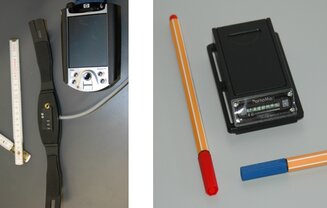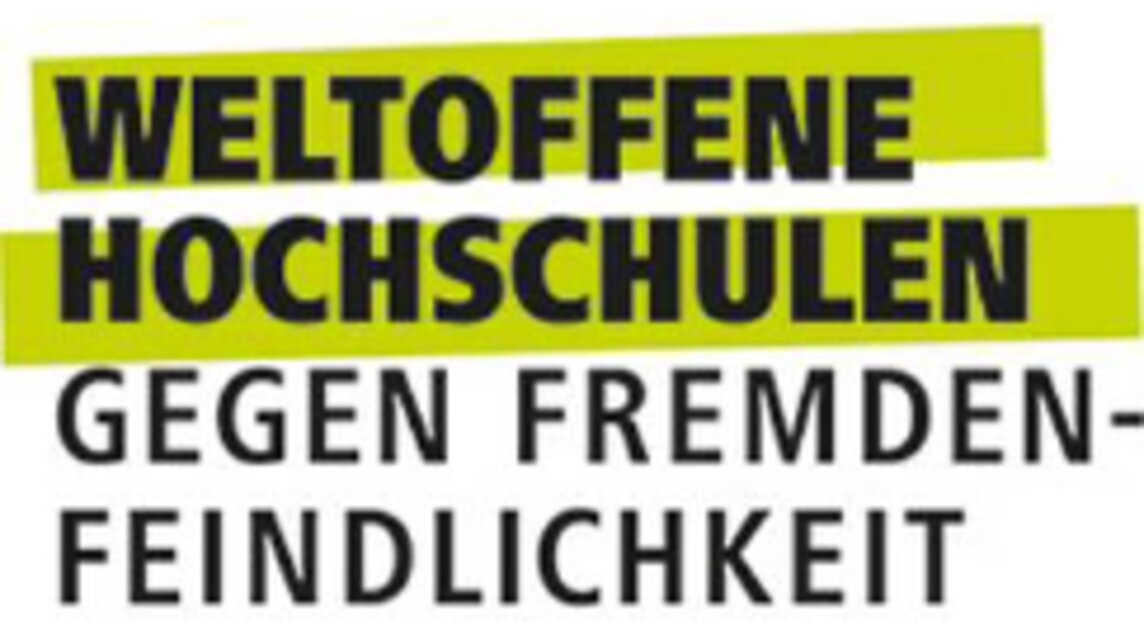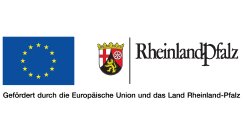NIR Spectroscopy of Muscle and Skin
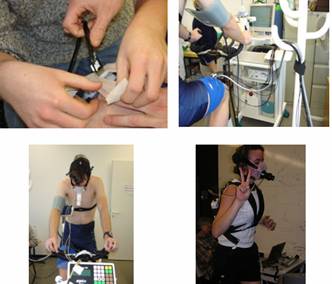
NIR Spectroscopy of Muscle and Skin
There is a number of established methods for the assessment of human performance during sports and exercise, ranging from gas (O2 and CO2) analysis to blood samples. Near-infrared spectroscopy allows the non-invasive measurement of muscle oxygenation and therefore gives a measure for body metabolism.
In the figures the placement of the optical fibres is shown and the lab setting for performance tests during cycling and running. The challenge is to establish new methods in this sometimes rough environment.
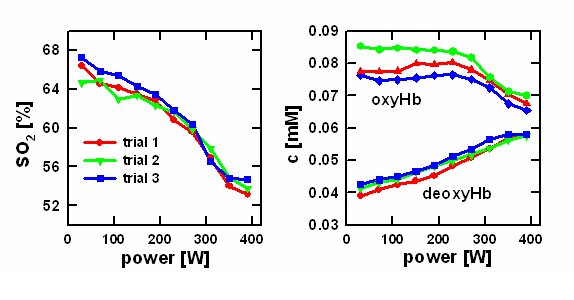
Reproducibility of muscle oxygenation measurements by NIRS:
Any new method raises the question of data quality. We addressed this by repeating the same cycling exercise trial three times on the same data. For each volunteer (example in the figure) the reproducibility was high with variations in muscle oxygen saturation SO2 better than 1.5 %.
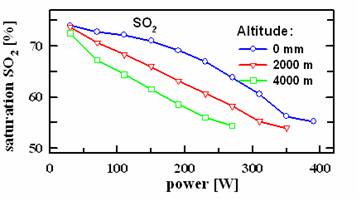
Muscle oxygenation during altitude conditions (hypoxia):
The performance of the human body depends on the oxygen supply by the inhaled air. We tested the influence of altitude conditions on the oxygenation of the muscles of the leg during cycling. An example is shown for a volunteer where the oxygen saturation of the tissue is plotted versus the exercise power. There is a clear decrease both in maximal power and in oxygen saturation with increased altitude.
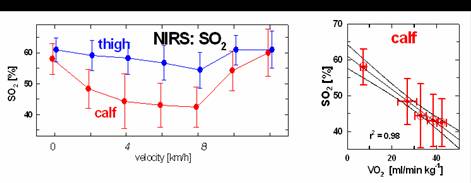
Muscle oxygenation during running and comparison with spirometry:
Here the calf and thigh muscle oxygen saturation is shown as a function of running velocity for healthy volunteers. There is a clear decrease with higher exercise power. The correlation with the whole body energy expenditure as measured by spirometry (volume of inhaled oxygen VO2) is good.
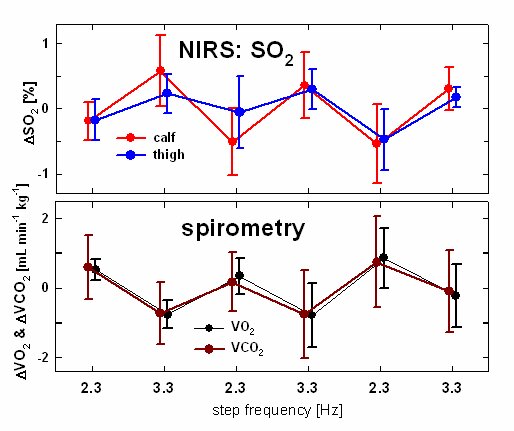
Running efficiency Assessed by NIRS:
During running the energy efficiency of the body depends on the movement of the limbs, and the experienced athlete optimizes his or her style accordingly. It was tested whether the muscle oxygenation as measured by NIR spectroscopy as well as the body energy consumption is modulated by the step frequency when keeping the velocity constant. The data show that the method is able to discern small changes in tissue oxygenation.
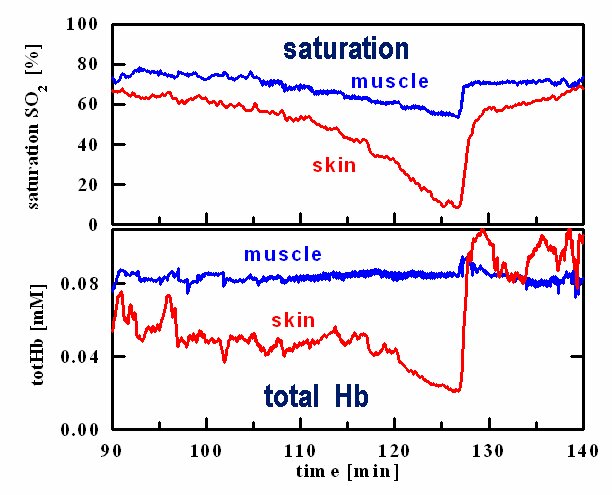
Discrimination of Muscle and Skin:
During exercise both muscle and skin blood supply is modulated with the skin e.g. serving to remove heat. The figure shows an example of muscle and skin oxygen saturation and total haemoglobin concentration during an incremental cycling exercise. It is apparent that both organs are coupled, however, that at higher exercise levels there is a drainage of blood from skin to muscle.
Other current ongoing projects are:
Performance of Cardiac Patients and Influence of Training and Medication:
In a large trial with cardiac patients, the effect of training and specific medication is tested. Specifically, systemic physiological parameters like VO2, VCO2, blood gas values, lactate concentrations are co-registered with muscle oxygenation.
Skin and Muscle Oxygenation after Application of Vasodilating Creams:
There are a number of creams which significantly increase the blood vessel diameters and therefore the blood flow. Though these creams are widely used for the therapy and prevention of sports injuries, their physiological mechanisms are still badly understood. With optical spectroscopy we currently assess this effect, with the main question being the depth profile of this increase in blood flow and concentration.
Separation of Myoglobin and Haemoglobin in Muscle:
It is notoriously difficult to separate myoglobin and haemoglobin by optical spectroscopy as their extinction spectra are very similar. By in vitro test, first steps are made for a better understanding of this topic.
Depth Resolved Oxygenation Measurement:
As outlined in the methods section, time-domain spectroscopy allows depth information of tissue absorption to be retrieved. Currently we apply this method to muscle.
Simultaneous Monitoring of Muscle and Brain Oxygenation during Sports:
During exercise, the brain functions are increased for e.g. the control of the body movement and the motivation. Currently, we use NIRS to study both muscle and cortical activation during exercise.
In all these projects instruments developed in the lab are used. Besides multi-channel, broad-band or time-domain systems portable monitoring systems are well suited for sports applications.
